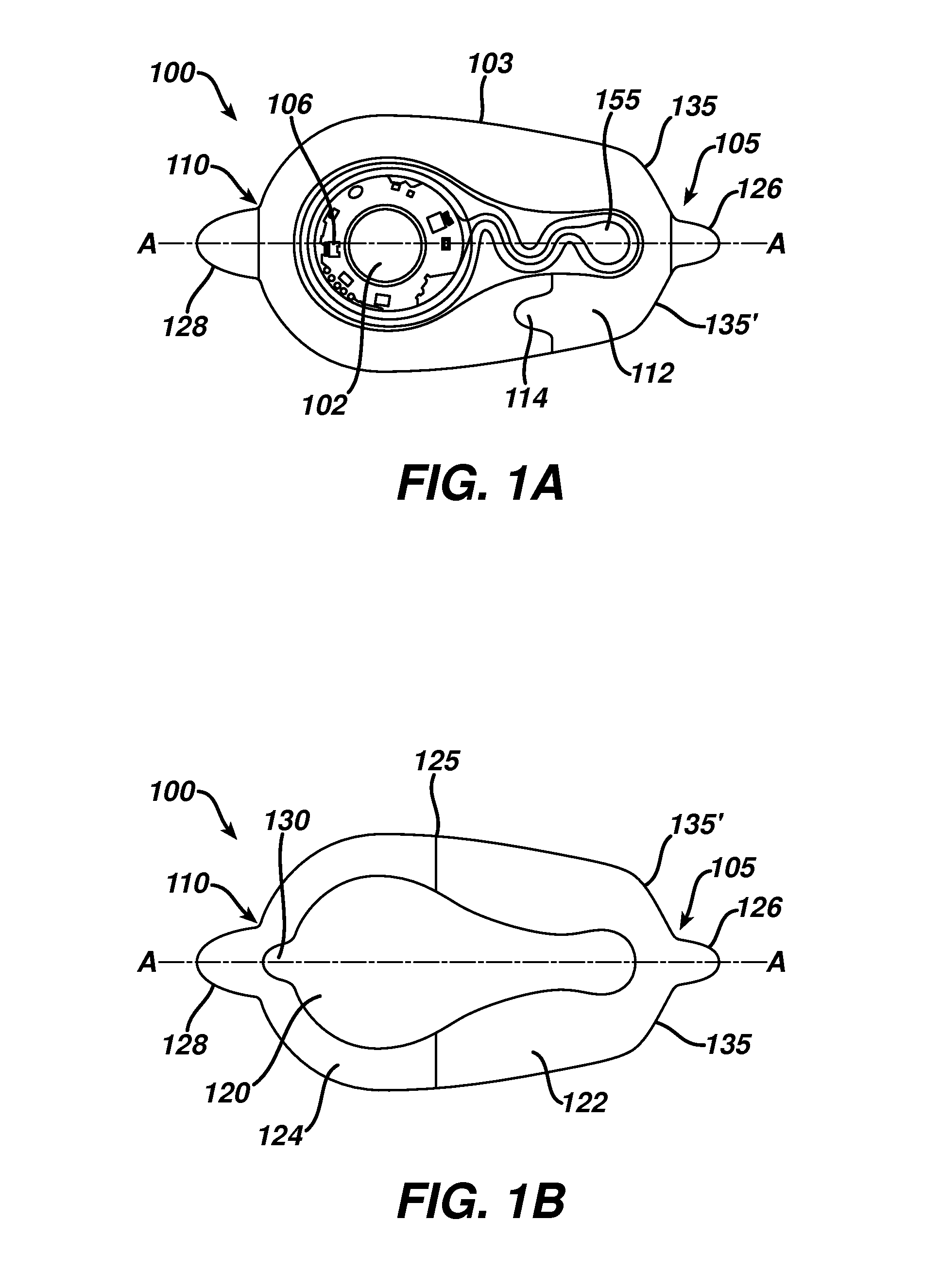Transdermal Medical Patch
a technology of transdermal patch and patch, which is applied in the field of medical patch, can solve the problems of pain, numbness, weakness, and wear and tear of functional defects, and achieve the effects of reducing pain, numbness, and numbness
- Summary
- Abstract
- Description
- Claims
- Application Information
AI Technical Summary
Benefits of technology
Problems solved by technology
Method used
Image
Examples
Embodiment Construction
[0041]The present invention is directed to a medical patch to transdermally deliver a treatment therapy to a target site of the body. In accordance with the present invention, the treatment therapy provided by the medical patch to the target site of the body may include electrical stimulation and / or delivery of a pharmacological agent such as pain medication, drugs or hormones. By way of illustrative example, the medical patch is shown and described as providing neurostimulation to one or more targeted nerves via electrical stimulation. It is understood that the present inventive transdermal medical patch may be adapted to provide treatment therapy to any desired target site of the body (not just one or more nerves) and deliver a pharmacological agent in addition to, or instead of electrical stimulation. Both the type of treatment therapy provided and the target site may be selected, as desired, depending on the medical condition being treated.
[0042]FIG. 1A is a top view of the exem...
PUM
 Login to View More
Login to View More Abstract
Description
Claims
Application Information
 Login to View More
Login to View More - R&D
- Intellectual Property
- Life Sciences
- Materials
- Tech Scout
- Unparalleled Data Quality
- Higher Quality Content
- 60% Fewer Hallucinations
Browse by: Latest US Patents, China's latest patents, Technical Efficacy Thesaurus, Application Domain, Technology Topic, Popular Technical Reports.
© 2025 PatSnap. All rights reserved.Legal|Privacy policy|Modern Slavery Act Transparency Statement|Sitemap|About US| Contact US: help@patsnap.com



